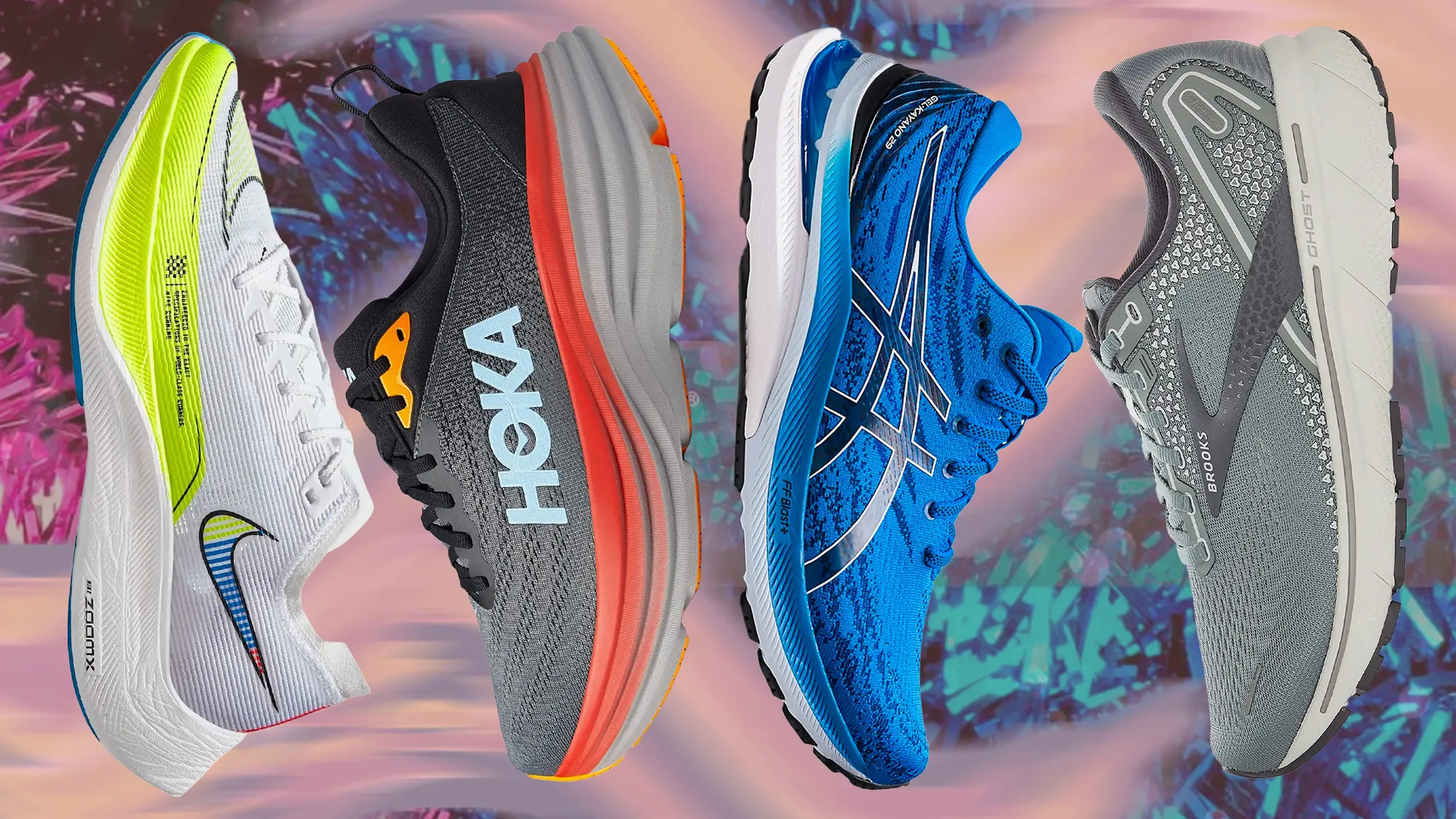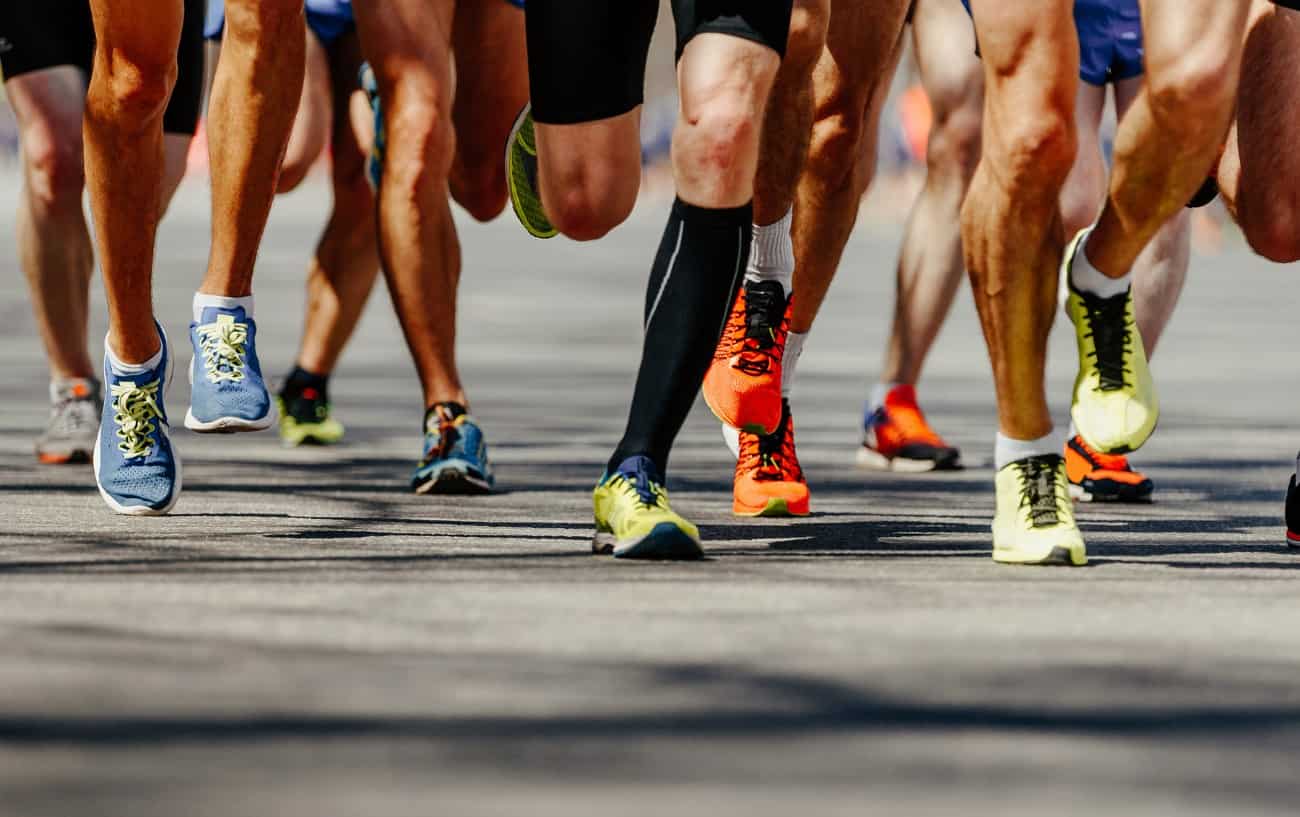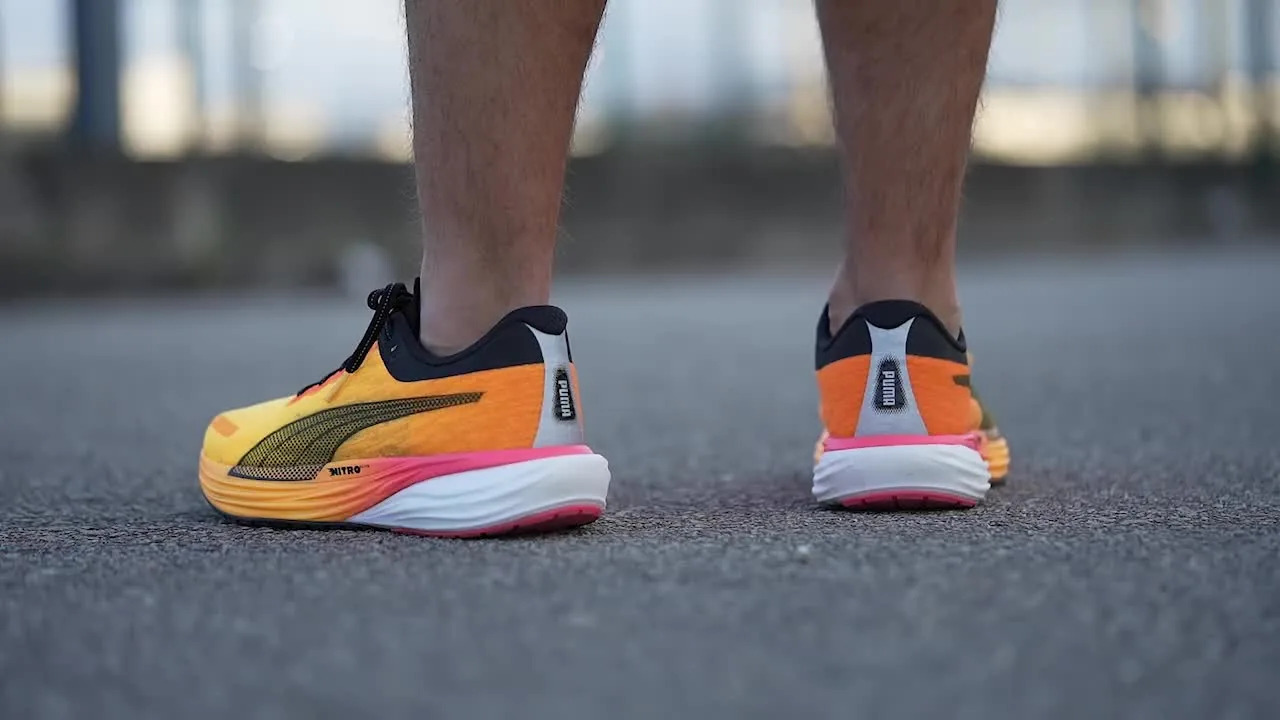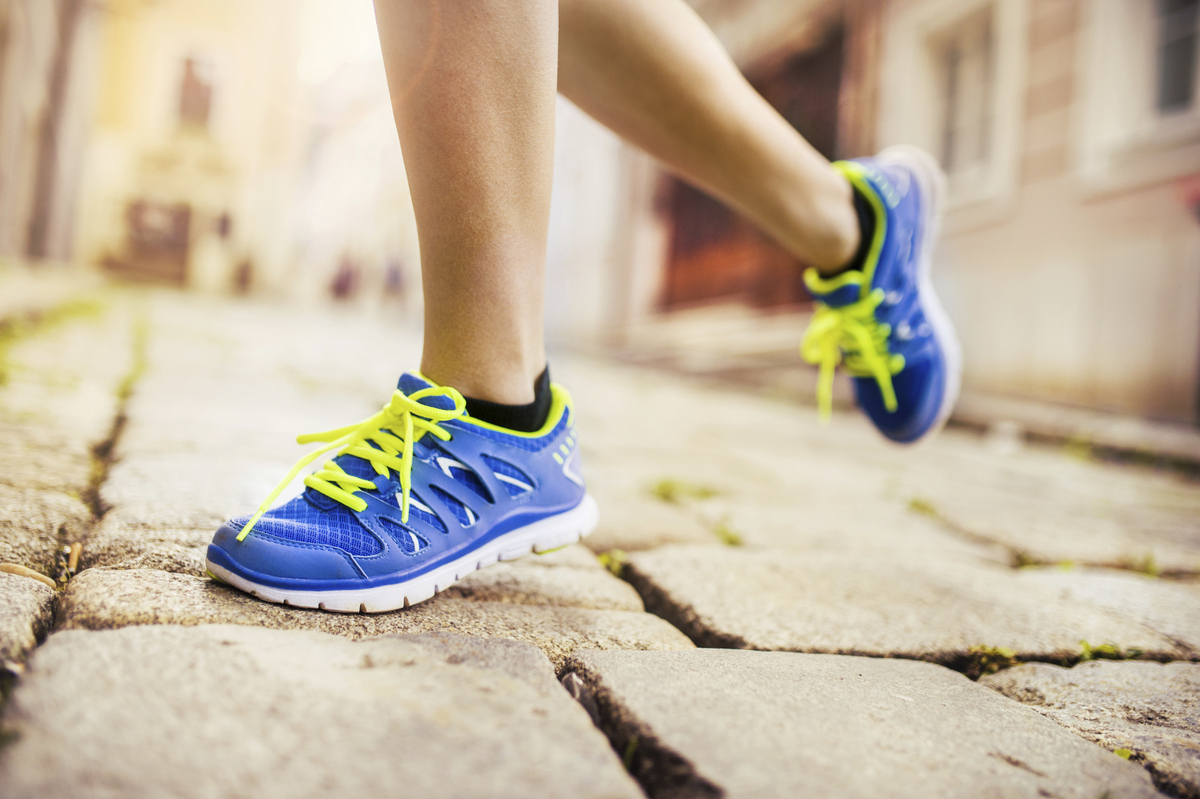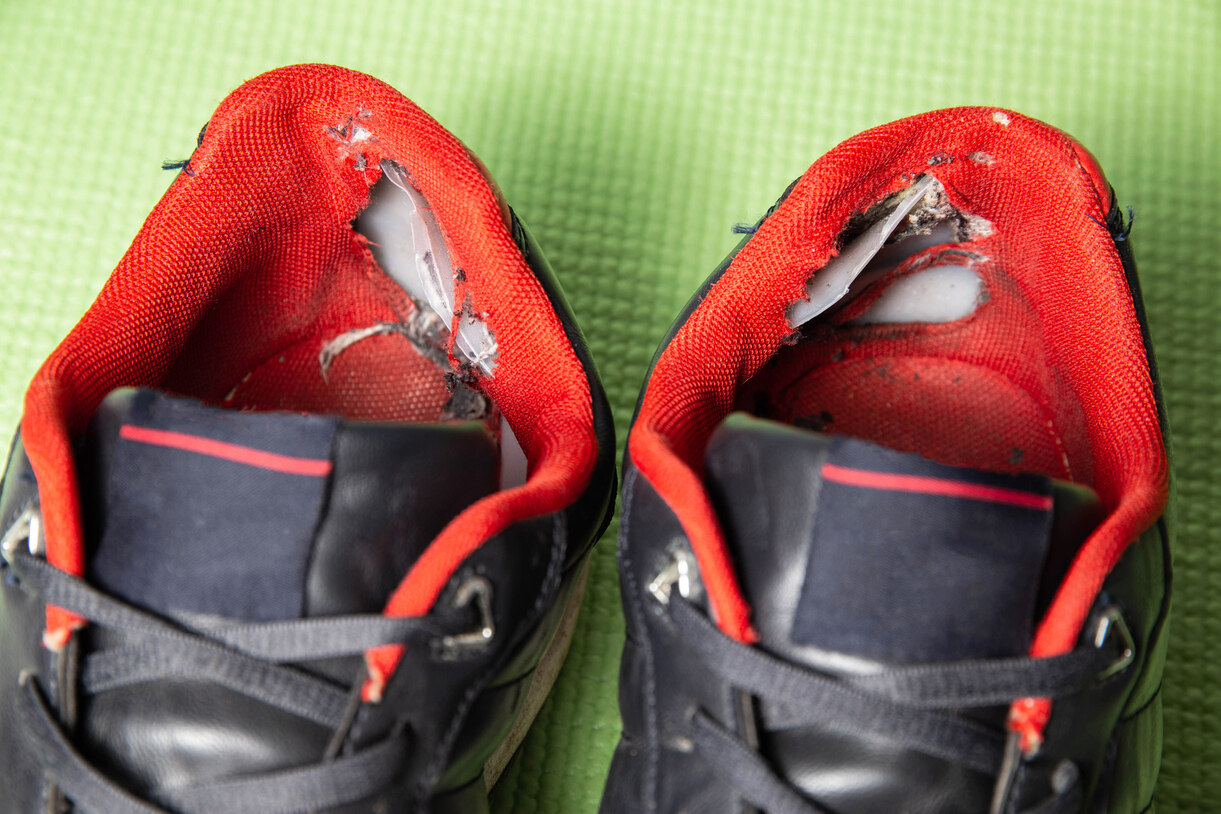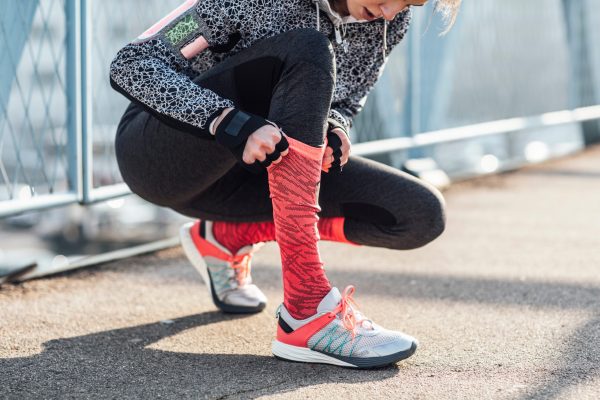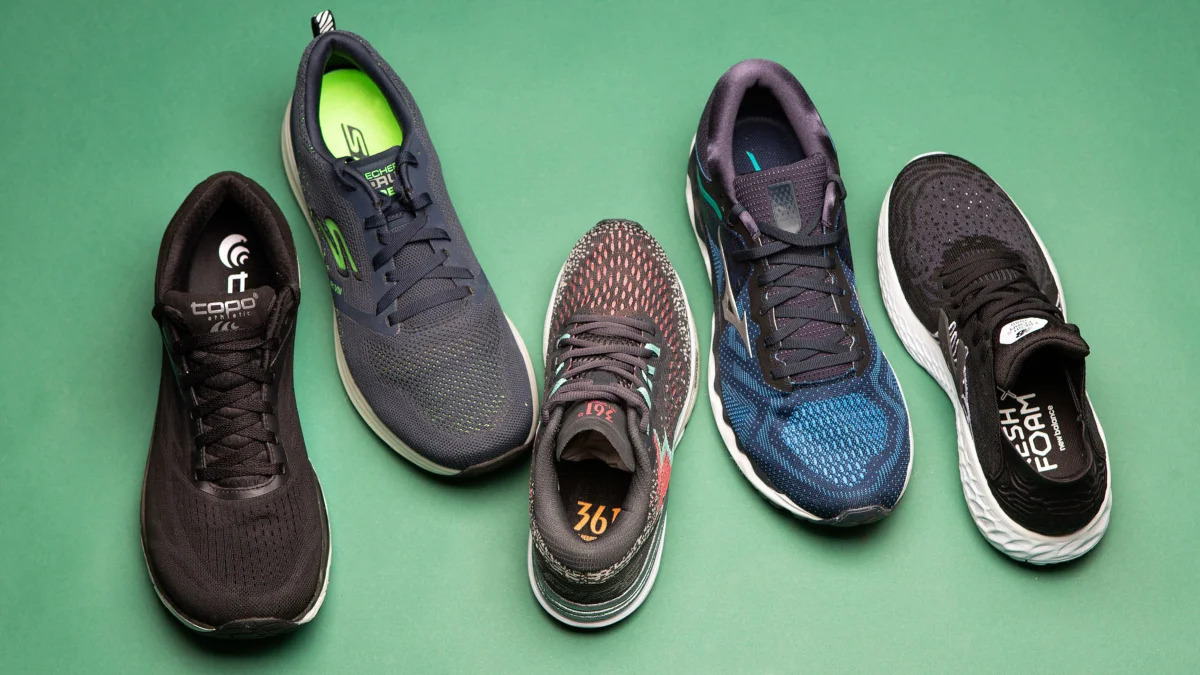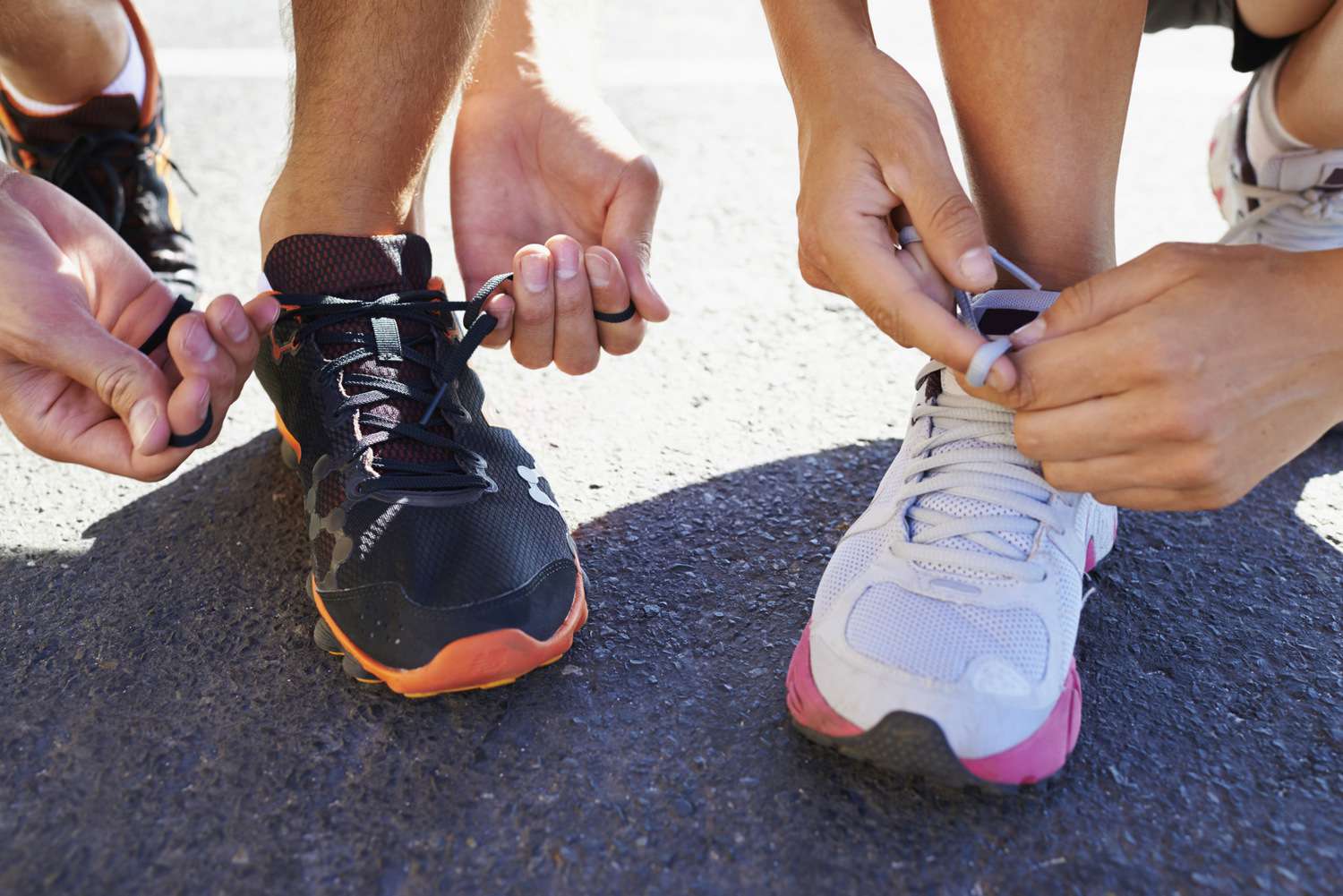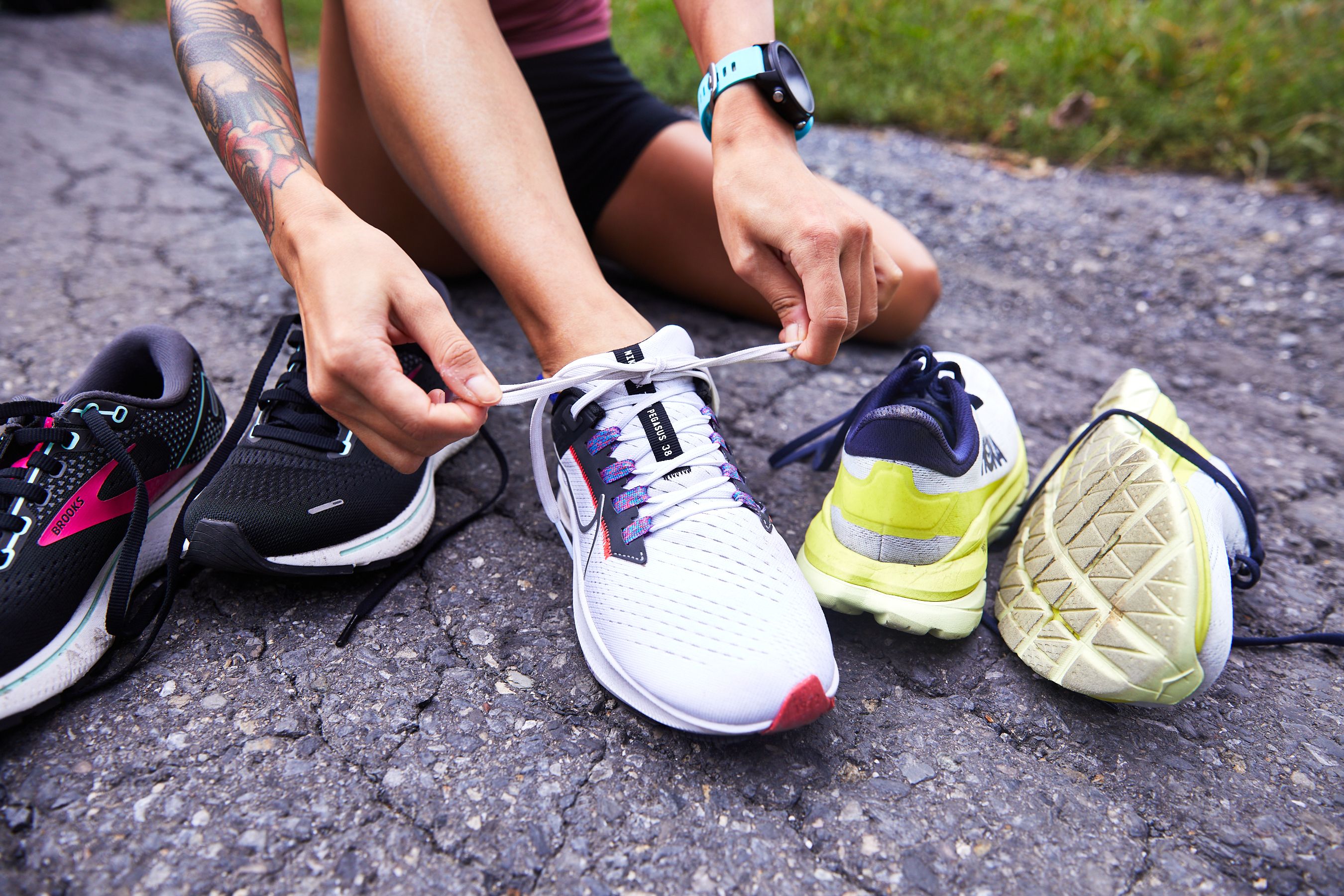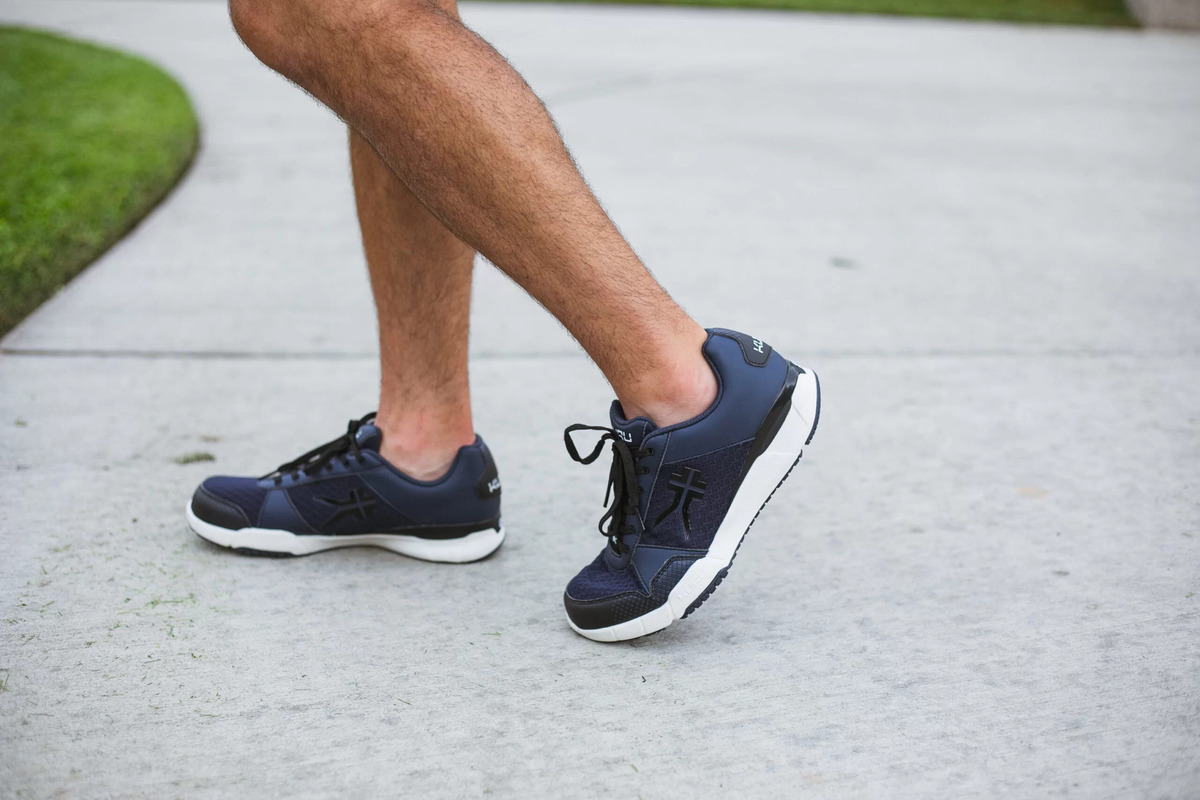

Featured
What Kind Of Running Shoes For Flat Feet
Modified: January 22, 2024
Find the perfect running shoes for flat feet with our featured selection. Get the support and comfort you need for a pain-free workout.
Introduction
Welcome to our comprehensive guide on finding the perfect running shoes for flat feet. Whether you’re a seasoned runner or just starting out, it’s crucial to understand the impact of flat feet on your running form and overall comfort. While having flat feet may present its challenges, the right pair of running shoes can make all the difference in providing the necessary support and stability.
Before we dive into the specifics of choosing the best running shoes for flat feet, let’s take a moment to understand what flat feet are. Flat feet, also known as fallen arches, occur when the arches on the inside of your feet are significantly lower or nonexistent. This can result in the entire sole of your foot resting on the ground when standing or walking, rather than having a curve or arch.
Flat feet can be inherited or developed over time due to various factors such as weak arch muscles, injury, obesity, or aging. While having flat feet is fairly common and doesn’t necessarily hinder everyday activities, it can pose challenges when engaging in high-impact activities like running.
When it comes to running, flat feet can affect your running gait and potentially lead to discomfort, pain, and even injuries. Without proper support, the lack of arches can cause overpronation, which means your feet roll inward excessively with each step. This misalignment can put strain on your ankles, knees, hips, and lower back, leading to conditions such as shin splints, plantar fasciitis, and IT band syndrome.
To mitigate these risks and ensure an enjoyable running experience, it’s crucial to invest in running shoes specifically designed for flat feet. These shoes provide the necessary arch support, stability, and cushioning to help align your feet properly and distribute the impact of each stride evenly.
When searching for the perfect pair of running shoes for flat feet, there are several key features to consider. These features include arch support, motion control, cushioning, stability, and a supportive midsole. Additionally, there are different types of running shoe styles that cater to flat feet, such as motion control shoes, stability shoes, and neutral shoes with added arch support.
In this guide, we will delve into the essential features to look for in running shoes for flat feet, provide recommendations for specific shoe types, and offer tips for shopping and trying on shoes. By the end of this guide, you’ll have the knowledge and confidence to choose running shoes that best suit your flat feet and enhance your running experience.
Understanding Flat Feet
Before we explore the world of running shoes for flat feet, it’s important to have a clear understanding of what flat feet actually are. Flat feet, also known as fallen arches, is a condition where the arches on the inside of the feet are significantly lower or completely absent. This means that when a person with flat feet stands, their entire sole touches the ground, rather than having a pronounced arch.
Flat feet can be categorized into two types: flexible and rigid. Flexible flat feet are more common and can develop over time due to factors such as weak arch muscles, injury, obesity, or aging. When weight is placed on the feet, the arches collapse, making the feet appear flat. However, when there is no weight on the feet, the arches may reappear or partially reappear. Rigid flat feet, on the other hand, are less common and are usually a result of a structural abnormality in the bones of the foot. In this case, the arches remain flat regardless of weight distribution.
It’s worth noting that having flat feet is not necessarily a cause for concern. In fact, many individuals with flat feet do not experience any pain or discomfort. However, for some people, flat feet can lead to issues such as overpronation, an inward rolling motion of the foot during walking or running, which can throw off the body’s alignment and increase the risk of developing various foot and leg conditions.
Flat feet can manifest in different ways and can vary in severity from person to person. Some individuals with flat feet may experience no symptoms at all, while others may have difficulty finding comfortable shoes, or may suffer from foot, ankle, or lower leg pain. It’s important to understand that everyone’s feet are unique, and therefore, it’s crucial to find the right type of footwear that provides adequate support and meets individual needs.
If you suspect that you have flat feet or are experiencing any discomfort or pain related to your feet, it’s advisable to consult with a healthcare professional, such as a podiatrist or orthopedic specialist. They can assess your feet, determine the severity of your condition, and provide appropriate guidance and recommendations.
In the next section, we will discuss how flat feet can impact running and why it’s essential to choose the right running shoes to ensure safety and optimal performance.
Impact of Flat Feet on Running
For individuals with flat feet, running can present unique challenges and potential risks. The lack of arch support and alignment can have a significant impact on running form, stability, and overall comfort. Understanding the specific ways in which flat feet can affect running can help you make informed decisions when it comes to choosing the right running shoes.
One of the primary concerns for runners with flat feet is overpronation. Overpronation occurs when the feet roll inward excessively during the running gait. This inward rolling motion can cause imbalances in the body’s alignment, putting increased stress on the feet, ankles, knees, and hips. As a result, runners with flat feet are more susceptible to developing various injuries, such as shin splints, plantar fasciitis, IT band syndrome, and Achilles tendonitis.
Additionally, flat feet can lead to a lack of shock absorption. The natural arches of the feet act as shock absorbers, distributing the impact of each step and providing cushioning. Without proper arch support, the feet are less able to absorb the shock from running, which can increase the strain on the lower body and contribute to discomfort and potential injuries.
The misalignment caused by flat feet can also affect the distribution of weight during running. When the arches collapse, the weight distribution may shift more towards the inside of the foot, leading to an uneven distribution of pressure. This uneven pressure distribution can lead to pain and discomfort in specific areas, such as the arches, heels, and balls of the feet.
Moreover, flat feet can affect running efficiency. With overpronation and a lack of proper support, runners may experience a decrease in stride efficiency. The imbalanced gait caused by flat feet can result in wasted energy and decreased propulsion, affecting overall running performance.
Understanding the impact of flat feet on running highlights the importance of choosing running shoes that address these specific challenges. The right pair of running shoes can provide the necessary support, stability, and cushioning to align the feet properly, absorb shock, and improve overall running performance.
In the next section, we will discuss the importance of proper running shoes for flat feet and the key features to look for when selecting the right pair.
Importance of Proper Running Shoes for Flat Feet
When it comes to running with flat feet, the right pair of running shoes can make a world of difference. Proper running shoes specifically designed for flat feet are essential in providing the necessary support, stability, and cushioning to enhance comfort, reduce the risk of injuries, and improve overall running performance.
The primary goal of running shoes for flat feet is to address the issues caused by overpronation and the lack of arch support. These shoes are designed with features that help align the feet properly and provide the stability needed to control excessive inward rolling. By minimizing overpronation, running shoes for flat feet can help reduce the risk of injuries, such as shin splints, plantar fasciitis, and IT band syndrome.
One of the key elements of proper running shoes for flat feet is arch support. These shoes are equipped with built-in arch structures or supportive technologies that help maintain the natural alignment of the feet. The arch support helps distribute weight evenly across the foot, reducing strain on the arches and promoting a more efficient running gait.
Cushioning is another vital aspect of running shoes for flat feet. The lack of arches in flat feet can result in decreased shock absorption, leading to increased strain on the feet and legs. Therefore, running shoes for flat feet often incorporate extra cushioning in the midsole and heel areas to absorb impact, minimize stress on the joints, and provide a more comfortable running experience.
In addition to arch support and cushioning, running shoes for flat feet prioritize stability. These shoes feature supportive structures, such as medial posts or roll bars, that help prevent excessive inward rolling of the feet. By providing stability, these shoes can help maintain proper alignment, improve running form, and reduce the risk of overuse injuries.
Another important consideration is the overall construction and fit of the running shoes. The shoes should have a supportive and durable upper that securely holds the foot in place. They should also provide ample room in the toe box to accommodate the natural spread of the toes and prevent discomfort or pain. Additionally, it’s essential to choose running shoes that are the correct size and width to ensure a proper fit and optimal performance.
By wearing the right running shoes for flat feet, runners can experience improved comfort, reduced pain, and increased confidence in their running endeavors. These shoes provide the necessary support and alignment to help individuals with flat feet overcome the challenges associated with overpronation and minimize the risk of injuries.
In the next section, we will discuss the key features to look for when selecting running shoes for flat feet.
Key Features to Look for in Running Shoes for Flat Feet
Choosing the right running shoes for flat feet involves considering several key features that can provide the necessary support and stability for optimal performance and comfort. By understanding these features, you can make an informed decision when selecting the right pair of running shoes for your flat feet.
1. Arch Support: Look for running shoes that offer sufficient arch support. This can be in the form of built-in arch structures, medial posts, or supportive technologies that help maintain the natural alignment of the feet and reduce overpronation.
2. Cushioning: Opt for running shoes with ample cushioning in the midsole and heel areas. This extra cushioning helps absorb impact and reduce stress on the feet and joints, providing a more comfortable running experience.
3. Stability: Seek out running shoes that prioritize stability. Look for features such as medial posts or roll bars that help prevent excessive inward rolling (overpronation). These stability features promote proper alignment and reduce the risk of overuse injuries.
4. Motion Control: Depending on the severity of your flat feet and overpronation, motion control shoes may be suitable for you. These shoes are designed to provide maximum support and control for severe overpronation, helping to minimize inward rolling and maintain proper alignment.
5. Supportive Midsole: Look for running shoes with a supportive midsole that provides structure and stability. A firmer midsole can help control excessive motion and provide a more stable platform for running.
6. Removable Insoles: Consider running shoes with removable insoles. This allows you to customize the level of arch support by inserting orthotic insoles or using custom orthotics prescribed by a healthcare professional.
7. Breathability: It’s important to choose running shoes with breathable materials to keep your feet cool and dry during your runs. Look for mesh or breathable upper materials that facilitate airflow and moisture-wicking properties to prevent discomfort.
8. Proper Fit: Ensure that the running shoes fit properly. They should provide a snug fit through the heel and midfoot, with enough room in the toe box to allow for natural toe splay. It’s recommended to try on shoes and walk or run in them before making a purchase.
9. Durability: Consider the durability of the running shoes. Look for shoes with sturdy construction and durable materials that can withstand the demands of running, providing long-lasting support for your flat feet.
By prioritizing these key features, you can find running shoes that offer the necessary support, stability, and cushioning for your flat feet. Remember that every individual’s feet are unique, so it’s essential to find a pair of shoes that fit comfortably and meet your specific needs.
In the next section, we will explore the different types of running shoes recommended for flat feet.
Types of Running Shoes Recommended for Flat Feet
When it comes to running shoes for flat feet, there are several types that are specifically recommended to provide the necessary support and stability for individuals with this condition.
1. Motion Control Shoes: Motion control shoes are specifically designed for those with severe overpronation and flat feet. These shoes offer maximum stability and support through reinforced midsoles, medial posts, and rigid structures. They help control excessive inward rolling and maintain proper alignment during running.
2. Stability Shoes: Stability shoes are another excellent option for flat feet. They provide a balance between cushioning and support, making them suitable for individuals with moderate overpronation. Stability shoes feature supportive features such as medial posts or dual-density midsoles to help control overpronation and promote proper alignment.
3. Neutral Shoes with Arch Support: Some runners with flat feet may find neutral shoes with added arch support to be suitable. These shoes are designed for runners with a more neutral pronation pattern but still provide the necessary arch support for flat feet. They offer cushioning and flexibility while providing extra support in the arch area to address the needs of those with flat feet.
4. Custom Orthotics: In some cases, runners with flat feet may benefit from using custom orthotics. These are specially made shoe inserts that are prescribed by a healthcare professional. Custom orthotics provide personalized arch support and can be inserted into a variety of running shoes to meet individual needs.
When considering these different types of running shoes, it’s important to choose the ones that align with the severity of your flat feet and the level of overpronation. Consult with a healthcare professional or footwear specialist who can assess your foot mechanics and provide guidance on the most appropriate shoe type for your specific needs.
Moreover, keep in mind that everyone’s feet are unique, and what works for one person may not work for another. It’s essential to try on different brands and models to find the running shoes that offer the best combination of support, comfort, and performance for you.
In the next section, we will discuss common mistakes to avoid when choosing running shoes for flat feet.
Common Mistakes to Avoid when Choosing Running Shoes for Flat Feet
When searching for the perfect running shoes for flat feet, it’s important to avoid certain common mistakes that can compromise comfort, support, and overall running performance. By being aware of these mistakes, you can make more informed decisions when selecting running shoes for your flat feet.
1. Neglecting Arch Support: One of the most common mistakes is overlooking the importance of proper arch support. Flat feet require additional support to compensate for the lack of natural arches. Neglecting to choose running shoes with adequate arch support can lead to excessive pronation and discomfort during running.
2. Choosing Improper Shoe Type: Another mistake is selecting the wrong type of running shoe for your flat feet. It’s important to consider the level of overpronation and choose motion control, stability, or neutral shoes with added arch support accordingly. Choosing the wrong shoe type can result in insufficient support and potential injury.
3. Focusing Solely on Cushioning: While cushioning is important, focusing solely on cushioned shoes can be a mistake. Flat feet require stability and support to control overpronation. Consider shoes that offer a balance between cushioning and stability to ensure proper alignment and reduce the risk of injuries.
4. Ignoring Proper Sizing: Wearing running shoes that are the wrong size is a common mistake for all runners, including those with flat feet. Ill-fitting shoes can lead to discomfort, blisters, and even more significant issues. Make sure to get properly fitted for running shoes, taking into account length, width, and ensuring a snug and secure fit.
5. Not Trying on Different Brands and Models: Every shoe brand and model is designed differently, and what works for one person may not work for another. Don’t restrict yourself to a specific brand or model. Take the time to try on different shoes from various brands to find the one that offers the best combination of comfort, support, and performance for your flat feet.
6. Ignoring Individual Comfort: While it’s important to consider the specific needs of flat feet, it’s equally crucial to prioritize individual comfort. What works for one person may not work for another, even if they both have flat feet. Listen to your own body and select the shoes that feel most comfortable and supportive during your runs.
7. Not Replacing Worn-Out Shoes: Running shoes have a limited lifespan, and continuing to run in worn-out shoes can lead to decreased support and increased risk of injuries. Pay attention to the wear and tear of your shoes, and replace them regularly to ensure optimal support and performance.
Avoiding these common mistakes can help you find the ideal running shoes for your flat feet. Take the time to research, try on different options, and seek professional guidance when needed. By prioritizing support, comfort, and proper fit, you can enhance your running experience and reduce the risk of foot and leg discomfort or injuries.
In the next section, we will provide tips for shopping and trying on running shoes for flat feet.
Tips for Shopping and Trying on Running Shoes for Flat Feet
When shopping for running shoes for flat feet, it’s essential to take a thoughtful and strategic approach to ensure you find the perfect pair. These tips will help you navigate the process of shopping and trying on running shoes, enabling you to make an informed decision that promotes comfort, support, and optimal running performance for your flat feet.
1. Do Your Research: Before heading to the store, do some research on different brands, models, and types of running shoes recommended for flat feet. Familiarize yourself with the specific features and technologies that provide support and stability for flat feet.
2. Visit a Specialty Running Store: Consider visiting a specialty running store where experts can assess your foot mechanics, analyze your gait, and provide personalized shoe recommendations. Their knowledge and expertise can help you find the right shoes for your flat feet.
3. Shop Later in the Day: Feet tend to swell throughout the day, so it’s recommended to shop for running shoes later in the day when your feet are at their largest. This will ensure you get the most accurate fit.
4. Wear Appropriate Socks: When trying on running shoes, wear the type of socks you typically wear during your runs. This will help you gauge how the shoes feel with the proper sock thickness and materials.
5. Allow Wiggle Room: Make sure there is enough space in the toe box for your toes to wiggle comfortably. You should have about a thumb’s width of space between your longest toe and the end of the shoe.
6. Test Different Sizes: Sizes can vary between brands and models, so don’t assume that you wear the same size in every shoe. Be open to trying different sizes to find the best fit. Remember that a proper fit is key for comfort and support.
7. Consider Orthotics: If you wear custom orthotics or have specific insoles, bring them along when trying on running shoes. Insert them into the shoes to ensure they fit properly and provide the necessary support.
8. Walk or Run in the Shoes: Take the time to walk or jog around the store in the shoes to get a feel for how they perform. Pay attention to any areas of discomfort or lack of support.
9. Seek Expert Guidance: Don’t be afraid to ask for assistance from store staff or experts. They can provide valuable insights, recommendations, and answer any questions you may have about running shoes for flat feet.
10. Trust Your Comfort: Ultimately, trust your own comfort and instincts when trying on running shoes. How the shoes feel on your feet is of utmost importance. Choose the pair that feels supportive, comfortable, and provides the necessary stability for your flat feet.
By following these tips, you can make the shopping and trying-on process a more successful and rewarding experience. Remember that finding the right pair of running shoes for your flat feet is a personal journey, and it may take time to find the perfect fit. Patience and perseverance will lead you to the running shoes that will enhance your running and support your flat feet effectively.
In the next section, we will wrap up this guide on running shoes for flat feet with a final summary and closing thoughts.
Conclusion
Finding the perfect running shoes for flat feet is crucial for individuals looking to engage in running with comfort, support, and reduced risk of injuries. By understanding the impact of flat feet on running and the importance of proper footwear, you can make informed decisions when selecting running shoes.
When it comes to running shoes for flat feet, key features such as arch support, cushioning, stability, and a supportive midsole are essential. Motion control shoes, stability shoes, and neutral shoes with added arch support are recommended for individuals with flat feet, depending on the severity of the condition.
However, it’s important to avoid common mistakes such as neglecting arch support, choosing the wrong shoe type, or ignoring proper sizing. Taking the time to do proper research, visiting specialty running stores, and trying on different brands and models can help you find the perfect fit for your flat feet.
Remember that everyone’s feet are unique, and what works for one person may not work for another. Individual comfort is paramount, so trust your own instincts and prioritize shoes that provide the necessary support, stability, and cushioning for your flat feet.
By following the tips provided in this guide, you can embark on your running journey with confidence, knowing that you have chosen the right pair of running shoes for your flat feet. Enjoy your runs and allow the support of your shoes to enhance your performance and comfort every step of the way.
Happy running!
